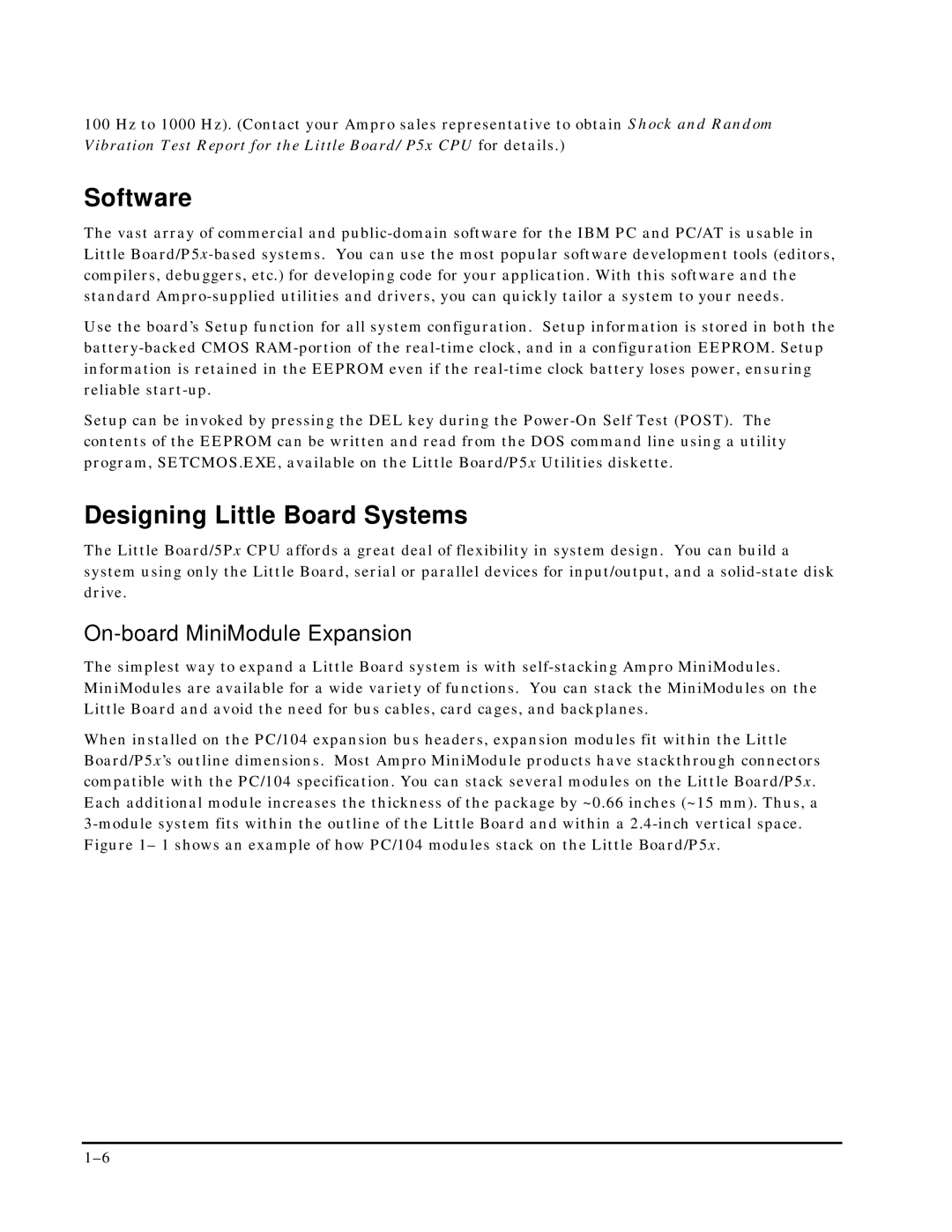100 Hz to 1000 Hz). (Contact your Ampro sales representative to obtain Shock and Random Vibration Test Report for the Little Board/P5x CPU for details.)
Software
The vast array of commercial and public-domain software for the IBM PC and PC/AT is usable in Little Board/P5x-based systems. You can use the most popular software development tools (editors, compilers, debuggers, etc.) for developing code for your application. With this software and the standard Ampro-supplied utilities and drivers, you can quickly tailor a system to your needs.
Use the board’s Setup function for all system configuration. Setup information is stored in both the battery-backed CMOS RAM-portion of the real-time clock, and in a configuration EEPROM. Setup information is retained in the EEPROM even if the real-time clock battery loses power, ensuring reliable start-up.
Setup can be invoked by pressing the DEL key during the Power-On Self Test (POST). The contents of the EEPROM can be written and read from the DOS command line using a utility program, SETCMOS.EXE, available on the Little Board/P5x Utilities diskette.
Designing Little Board Systems
The Little Board/5Px CPU affords a great deal of flexibility in system design. You can build a system using only the Little Board, serial or parallel devices for input/output, and a solid-state disk drive.
On-board MiniModule Expansion
The simplest way to expand a Little Board system is with self-stacking Ampro MiniModules. MiniModules are available for a wide variety of functions. You can stack the MiniModules on the Little Board and avoid the need for bus cables, card cages, and backplanes.
When installed on the PC/104 expansion bus headers, expansion modules fit within the Little Board/P5x’s outline dimensions. Most Ampro MiniModule products have stackthrough connectors compatible with the PC/104 specification. You can stack several modules on the Little Board/P5x. Each additional module increases the thickness of the package by ~0.66 inches (~15 mm). Thus, a 3-module system fits within the outline of the Little Board and within a 2.4-inch vertical space. Figure 1– 1 shows an example of how PC/104 modules stack on the Little Board/P5x.
